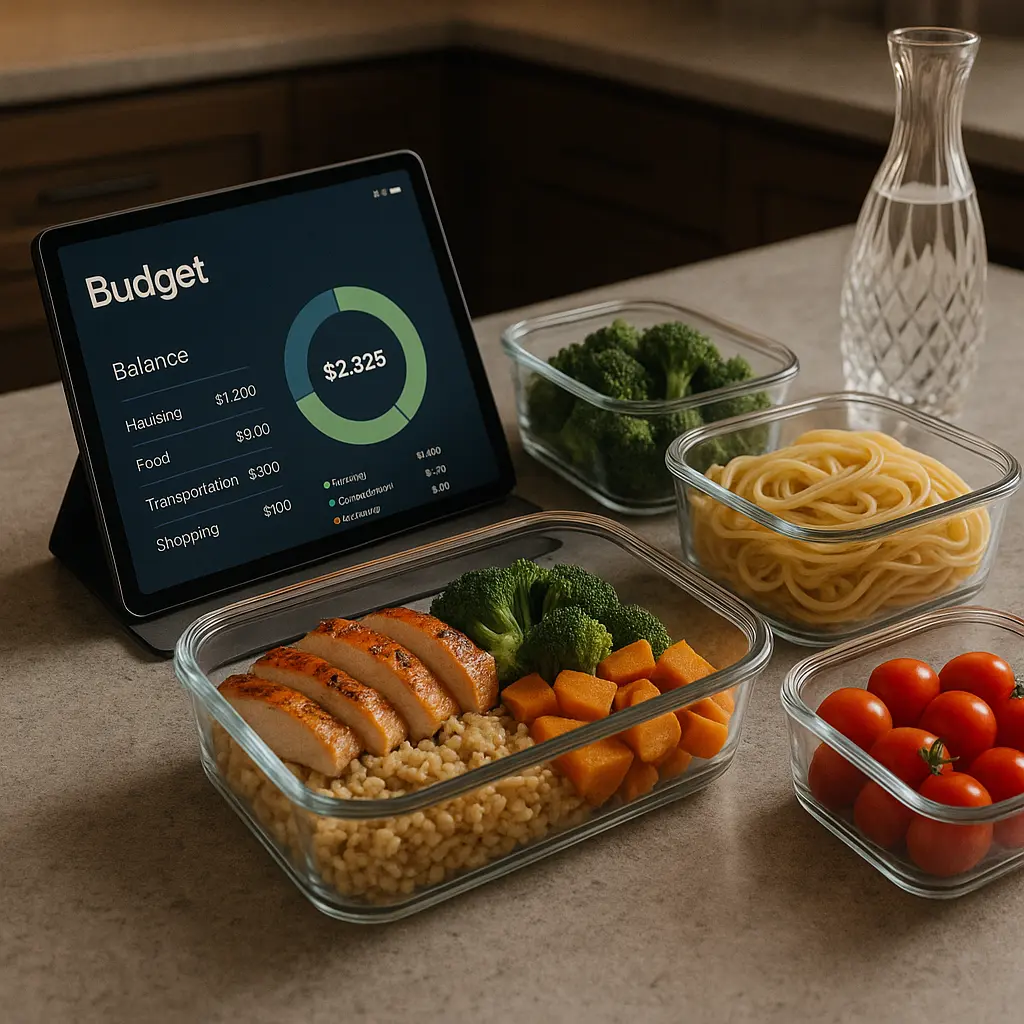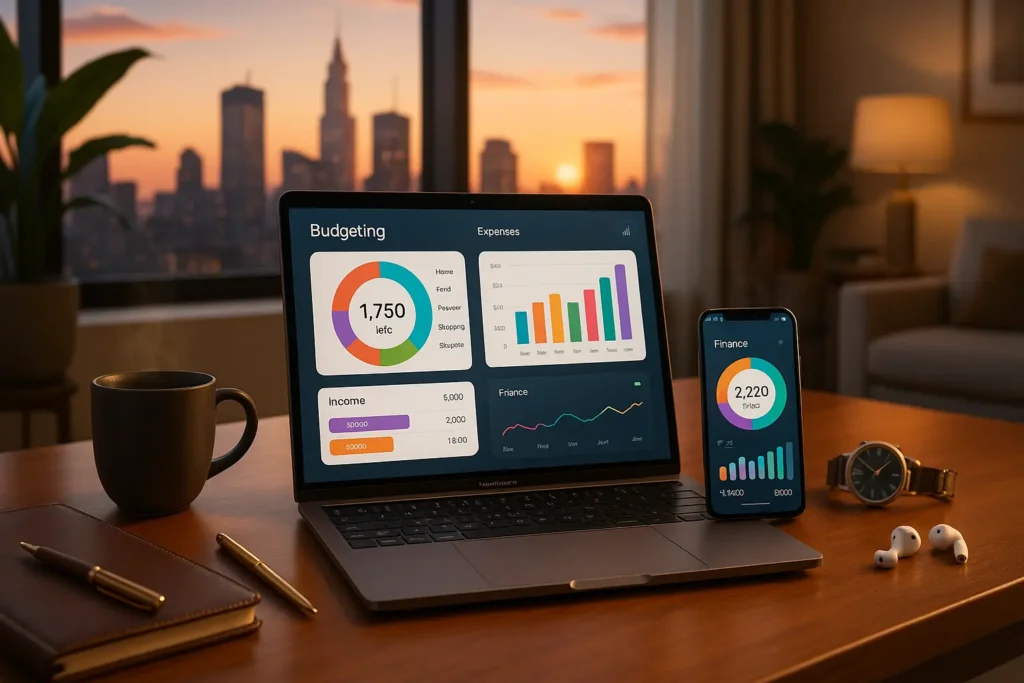How to Save Money Fast on a Low Income: 10 Smart Tips That Work
Making ends meet on a tight budget can feel like an uphill battle. Between rent, bills, and daily expenses, there often seems to be nothing left to save. In fact, experts note that inflation is as high as it’s been in over 40 years, making saving money almost “impossible” for many families.
Surveys back this up: one study found that 50% of Canadians couldn’t handle an unexpected $1,000 expense. That’s why learning how to save money fast on a low income is so important. Even small changes and simple strategies can add up to big savings over time, turning a tight paycheck into a little breathing room.
In this post on financekd, we’ll cut through the overwhelm and deliver practical, proven advice. You’ll learn how to track every rupee/dollar you spend and plug money leaks, create a budget that really works (even on a shoestring), and use smart savings tricks like automating transfers and micro-saving challenges.
We’ll also cover frugal living tips (DIY swaps, bulk meal planning, slashing utility costs), how to curb bad spending habits with impulse-busting rules, and even ways to pad your income with side hustles.
Finally, we’ll share mindset tips for long-term success, shifting from a scarcity mindset to celebrating small wins. Each of these 10 tips is tailored for low earners and backed by financial experts.
By the end, you’ll have a clear roadmap and concrete steps—daily money-saving habits—to start building a buffer and stretching your paycheck further. The key is to start small: pick one tip and make it a habit. Before you know it, you’ll be saving faster than you thought possible, even on a low income. Let’s dive in.

Understanding Your Financial Landscape
Why Financial Awareness is the First Step
Becoming financially aware is the crucial first step on any savings journey. It begins with understanding exactly where your money goes. Take a hard look at your bank statements and receipts: every cup of coffee, grocery trip, or bill adds up.
As personal finance coaches stress, “the simple step of understanding how much money you are spending can have a sizable impact on how much you save”. In other words, even modest changes can free up cash if you first see the full picture.
- Know your numbers: Calculate your monthly take-home pay and all fixed bills first. Then list variable costs (food, transport, phone, etc.)—even the small ones. Tools like Mint, PocketGuard, or MyMoneyDiary can automate this tracking.
- Monitor regularly: Experts recommend checking in daily or weekly on spending. You might set a weekly budget for groceries or entertainment and actually write it on the calendar. Some people track daily, others weekly; find what works for you. Tracking every expense (even loose change in your pocket) is one of those daily money-saving habits that can reveal surprisingly big leaks.
By building this financial awareness, you’ll start spotting problem areas. Maybe you notice you overspend on takeout dinners or subscriptions you forgot about. This awareness is especially vital when surviving on minimum wage or a low salary.
You’ll discover where you can cut back and re-route money toward savings or essentials. As the old adage goes, you can’t fix what you don’t measure—so start measuring every rupee/dollar first.
Keeping a record of all spending (even ₹10 here, $5 there) helps low-income earners see exactly where cash is going.
Track Every Rupee/Dollar You Spend (Tools & Apps)
There are many free apps and tools designed to help you track spending. For example, budgeting apps like Goodbudget, PocketGuard, or simple spreadsheets let you categorize expenses (rent, food, transport, etc.) and update them as you spend.
Even writing purchases on paper can work. The key is consistency: commit to logging expenses in real time or at day’s end.
Keeping track of your spending isn’t about limiting your freedom—it’s about opening your eyes. Once you start, patterns jump out at you. You might catch yourself thinking, ‘Did I really drop $50 on Uber rides this week?’ With that clarity, you can begin adjusting one spending habit at a time.
Often, just being aware of the numbers makes those little indulgences—like a ₹50 impulse snack or a $10 treat—much easier to skip. If there’s one habit to kickstart your financial journey, this is it. Even those with tight budgets can uncover hidden breathing room just by writing down where every rupee or dollar goes.
Identify Your Money Leaks
Once you track everything, look for leaks – those small, repeat expenses that add up. Common culprits include daily coffee runs, unused subscriptions, late fees, or impulse buys on sale items.
Are you overspending on delivery fees? Those groceries not on your list? Emotional spending triggers (boredom, stress, ads) are sneaky money drains. Financial experts warn that sales, special deals, and even emotions can prompt spending sprees. Stay mindful: before buying, ask why you want it.
Compile a list of daily money-saving habits to replace leaks: maybe pack a coffee, cancel a membership you rarely use, or walk instead of paying for short rides. If you find a leak, plug it immediately. Small habits—like brewing tea instead of grabbing an expensive chai every morning—are ways to survive on minimum wage and still save. Over time, these tiny savings accrete into a meaningful cushion.

Creating a Budget That Works on a Low Income
Simple Budgeting Methods That Actually Work (e.g., 50/30/20 Modified)
A workable budget is like a roadmap for your money. One classic method is the 50/30/20 rule: dedicate 50% of your after-tax income to needs (rent, groceries, utilities), 30% to wants, and 20% to savings or debt. For low earners, you might modify these ratios (for example, 60% needs, 20% wants, 20% savings) to reflect tight margins. The key is ensuring essentials come first while still carving out even a small portion for future goals.
Another approach is listing every expense category (50/30/20 is just a template). Write down actual numbers and adjust them monthly. The important thing is that your budget is realistic and you review it regularly. Even if you budget only a few dollars more toward savings each month, the habit counts.
A modified 50/30/20 budget can work on a low income: e.g., 50% for essential needs (groceries, rent), 30% for discretionary items, 20% for savings/debt.
Here’s a quick comparison of budgeting styles:
| Method | How It Works | Why It Helps on Low Income |
|---|---|---|
| 50/30/20 (modified) | Allocate ~50% to needs (rent, food), 30% to wants (entertainment, dining), 20% to savings/debt. | Simple framework; adjust percentages to reflect necessity. Keeps saving as a priority. |
| Zero-Based Budget | Assign every rupee/dollar of income a purpose so that income minus expenses = 0. | Ensures every cent is accounted for (savings included). Prevents “ghost spending.” |
| Envelope System | Label cash envelopes for each category (groceries, fun, etc.) and spend only the cash in each. | Physical cash makes spending tangible. Helps curb overspending since once an envelope is empty, you stop spending. |
| Digital Budgeting | Use apps (e.g., Goodbudget, Wallet) or spreadsheets as “virtual envelopes”. | Automated tracking and reminders. Mimics envelopes without carrying cash. |
Zero-Based Budgeting for Low Earners
Zero-based budgeting flips the usual approach to money management by making sure every rupee you earn has a clear, intentional purpose. By the end of the month, your income minus your planned spending—across essentials, savings, and debt—adds up to exactly zero.
This doesn’t mean you’re draining your bank account, but rather directing funds where they’re needed most, with nothing left unaccounted for. It’s about proactive planning, not reactive spending.
A common phrase that captures this idea is: “Assign a job to every rupee.” For families with tighter budgets, this method is especially powerful—it ensures priorities like food, housing, and savings come before leisure expenses. While it demands more attention than a simple budgeting rule, it builds strong financial awareness and control over every money move.
Cash Envelope & Digital Budgeting Apps
The envelope method is a hands-on way to budget. At the start of the month (or after payday), withdraw cash and divide it into envelopes labeled by category (for example: “Rent”, “Groceries”, “Fuel”, “Entertainment”).
Spend only what’s in each envelope. Physically handing over cash makes you feel your spending and has been shown to curb overspending. For instance, if you allocate ₹500 to a “lunch” envelope, you’ll know when that money is gone and stop there. This tactile approach can be especially powerful on a low income because it adds discipline and visibility.
Ditch the hassle of carrying cash and embrace a smarter way to budget—apps like YNAB and Goodbudget turn your phone into a digital wallet with personalised spending envelopes. They keep tabs on every transaction, sending gentle nudges when you’re nearing your set limits.
The beauty? You’ll always have a clear picture of where your money is going. Whether you swipe or tap, the mission is simple: take full charge of your expenses, seal the leaks, and let your savings thrive.

Smart Saving Tactics to Build Wealth Slowly but Surely
How to Automate Savings on a Small Paycheck
“Pay yourself first” – even a little – makes saving automatic. Low-income earners can set up an automatic transfer of a fixed amount (even ₹100 or $20) from checking to savings right after each payday. Approach saving money as if it’s a fixed commitment—just like paying a utility bill.
By automating your savings, you eliminate the temptation to spend what’s already been tucked away. Gradually, these small, consistent deposits accumulate into something meaningful. Many financial coaches agree: even a modest $20 monthly contribution can kickstart powerful habits and reshape how you view money—turning saving into second nature.
Create a separate savings account, even if it’s a small one with no minimum requirement, and automate a regular monthly transfer into it. Some banks and employers offer the option to split your paycheck deposit, directing a portion straight to your savings.
This effortless system helps build your emergency fund quietly over time, giving you significant reassurance knowing you have a financial cushion, no matter how small it begins.
Building an Emergency Fund Even if You’re Broke
Building a financial safety net is vital for those living on a tight budget. Start with a modest goal: maybe ₹10,000 ($100) to cover tiny mishaps, then build up. Remember that survey: half of people had no $1,000 safety net. Your buffer needn’t be huge, but every rupee in reserve helps avoid debt when the car breaks down or medical bills come.
You can build this fund via automation (as above) and by redirecting any windfalls or bonuses into it (following a simple rule like “50% of bonus to savings, 50% to fun”). Use your tracking knowledge to find one expense to cut each month, and put that into savings. Even saving ₹10–₹20 a day in a jar or savings app adds up: a loose-change challenge (collecting coins and small bills) surprisingly adds hundreds of rupees a year. As you see that emergency jar grow, you’ll feel more secure – and able to invest more confidently in your future plans.
Micro-Saving Challenges (₹10/day, etc.)
Tiny savings can have a huge impact. Consider a “₹10-a-day” challenge: each morning, set aside ₹10 in a cup or app; at month’s end, you’ll have ₹300. In a year, that’s ₹3,600 extra! Or save the smallest coin you get back as change each day. These micro-savings challenges are psychologically powerful: they turn saving into a game.
Some people use apps that round up purchases to the nearest ₹10 or dollar and save the difference. Others promise themselves a small splurge only after meeting a daily saving goal. The key is consistency. These daily saving habits require little sacrifice but demonstrate that saving is possible even on a tight budget. Gradually, through steady commitment, these steps add up, quietly growing your financial buffer and enhancing your sense of security.

Frugal Living Tips That Don’t Feel Like Sacrifices
Smart Substitutes: DIY, Second-Hand, Freebies
Frugal living isn’t about misery; it’s about creativity. Swap brand names for generics, buy refurbished electronics, or learn to DIY household repairs. Many items you regularly buy are available used: thrift stores, online resale sites, and garage sales often have everything from clothes to kitchenware at a fraction of retail. In fact, shopping second-hand can be almost fun – you might find unique items while saving tons. Also look for freebies: community give-aways, library rentals (books, movies, tools), and loyalty-program coupons.
Adopting a minimalist lifestyle approach helps too: keep only what you truly need. Before buying new, ask yourself if you can use something you already have or borrow it. For example, use old jars to store leftovers, repair clothes rather than replace them, or barter services (like babysitting) with friends. These strategies help you get the most from your rupee while clearing away excess, turning saving into a seamless part of your routine.
Low-Cost Meal Planning & Cooking in Bulk
Food is a major expense on any budget, so planning meals is one of the best ways to save money. Cook at home as much as possible. Create a weekly menu and shop with a list to avoid impulse buys. Buying ingredients in bulk (rice, beans, oats, frozen vegetables) often costs less per serving.
Batch cooking is a huge frugal hack: make a big pot of curry, soup, or stew on weekends and eat leftovers all week. It saves time and prevents expensive last-minute takeout. You can also shop sales and store deals – for instance, if chicken is discounted, buy extra and freeze it. Even simple swaps help: oatmeal for breakfast instead of cereal, or beans and lentils for protein instead of pricier meat. According to USDA nutrition programs, planned meals save both money and time.
Cutting Utility Bills Without Compromising Comfort
Utility bills (electricity, water, gas) can often be trimmed with small changes. Replace old bulbs with LED lights – they use up to 90% less energy and can save over $20 a year per bulb. Be mindful of thermostat settings: in winter, aim for about 68°F (20°C) and lower at night; in summer, set it a few degrees higher – the difference cuts bills significantly. Seal any drafts around windows and doors with weatherstripping or tape, so your heater/AC isn’t wasted. Shorten showers or fix leaks to save water. Even unplugging chargers and appliances when not in use avoids “phantom” electricity drain.
In short, these small adjustments – LED bulbs, quicker showers, thermostat tweaks – all add up to big savings over time. You won’t sacrifice comfort; you’re just using resources more efficiently.
Cut Bad Spending Habits and Control Impulses
Identify Emotional Spending Triggers
Beware of emotional spending. Many of us spend more when we’re stressed, bored, or chasing a sale. For example, did you buy those shoes because you felt down or to “treat yourself” after a hard day? Recognizing triggers helps cut losses. Keep a journal: note what feeling led to each purchase. Once you see patterns, you can intervene (for example, if boredom leads you to online shopping, find a free hobby or a walk instead).
Another trick: before you shop, ask: “Do I need this or just want it?” Delaying big purchases and checking your budget first can block impulsive orders.
Tips to Avoid Impulse Buying (especially online)
Online shopping is convenient but dangerous for impulse buys. To resist the urge: remove saved credit card info from shopping apps and websites, so you have to consciously enter details each time. Unsubscribe from marketing emails and avoid browsing “deals” sites when bored. Use ad-blockers or “no-spend” apps that pause online shopping for a day.
Develop a 24-Hour Rule: when tempted by something nonessential (flash sale, new gadget, clothing), wait 24 hours before clicking “buy.” Bankrate advises that this cool-down period lets the initial urge fade. After a day, you’ll often realize the item isn’t needed, or you’ll remember a cheaper alternative. During the wait, you can research the item’s price and reviews instead. This simple rule builds discipline: it prevents many impulse purchases and keeps your focus on real needs.
- Tip: Try paying cash whenever possible. It forces you to budget exactly how much you can spend. Research shows cash transactions tend to reduce overspending since you physically see money leaving your hands.
Creating a 24-Hour Rule Before Purchases
As soon as you want to click “buy,” mentally add an extra day. In that 24 hours, list the pros and cons: “Do I have the budget? Will this meet my goals? Is it a deal or just a want?” You could even sleep on it and revisit in the morning with fresh eyes. If it still feels important after a day (and you have the money), great—otherwise, odds are you’ll move on. Over time, this waiting habit will save you from countless regrets and keep your spending in check.
Boosting Income (Even a Little Helps a Lot)
Side Hustles That Fit a Busy Schedule
One of the best ways to stretch your paycheck is adding even a bit of extra income. In fact, over one-third of Americans (about 59 million) now do some freelancing or gig work.
You can, too. Look for side hustles that fit your skills and schedule: freelance writing, ride-share driving, delivery services, tutoring, or odd jobs like pet-sitting. Online platforms like Upwork, Fiverr, TaskRabbit, and even local Facebook groups can help you find short-term gigs. Even a few hours a week can significantly bolster your savings.
Choose something that doesn’t burn you out. For example, if you’re a student, you might do online tutoring in subjects you know. A parent might bake and sell cookies locally, or drive for a rideshare on weekends.
The key is to tap available resources and talents for a little extra cash. That extra ₹1000–₹2000 per month (or whatever small amount) directly boosts your budget or savings.
Finding small side gigs or freelance work (illustrated by working on a laptop with money) can help low-income earners stretch each paycheck.
Sell Unused Items or Offer Local Services
Clearing clutter is another income source. Sell things you no longer need: clothes, furniture, electronics. Online marketplaces (OLX, eBay, Facebook Marketplace) make this easy and often bring more money than a garage sale. That one-time boost can pad your savings or pay a bill.
You can also offer local services for a fee. Think lawn mowing, house cleaning, childcare, or elder care. Post a flyer or ask neighbors if they need help. These gigs often pay hourly and can become regular income.
For example, cleaning one house can earn as much as a couple of hours of work at a part-time job, but on your own schedule. Every rupee earned this way frees up what you’d otherwise spend on those services or saves you from using credit.
Remote Work & Microtask Platforms for Extra Cash
The online world presents countless small ways to earn money. You could explore taking surveys (with care), doing transcription jobs, testing websites, or completing simple assignments on platforms like Amazon Mechanical Turk. Although each pays only a small amount, together they can accumulate nicely.
You might also consider beginner remote roles such as chat-based customer support, data entry, or virtual assistant work, which usually just require a reliable computer and internet connection. Adding even $50 to $100 a month can make a real difference when managing a tight budget. The focus isn’t on quick wealth, but on gradually extending your financial reach.

Adopt a Money-Saving Mindset for Long-Term Success
Shift from Scarcity to Empowerment Thinking
The way you think can become either your most powerful friend or your toughest adversary. A scarcity mindset (fearing there’s never enough) often leads to either hoarding cash or panicking spending. Financial psychologists warn that constant fear can make you either spend as if there’s no tomorrow or never invest in your future. Instead, shift toward empowerment: recognize that every small saving or goal met is progress. See budgeting as a game of smart choices, not deprivation.
Train yourself to appreciate what you have and focus on growth: even if today you’re saving only ₹50 a week, celebrate that. Visualize your financial goals (e.g. a debt-free future or an emergency fund) and remind yourself that each small step gets you closer. This change in mindset – from fearing lack to feeling in control – will keep you motivated when times are tight.
Celebrate Small Wins to Stay Motivated
Set clear, specific goals (e.g. “Save ₹5,000 in six months” or “Reduce electric bill by 30%”). As you progress, celebrate mini-milestones: putting the first ₹1,000 in your savings, cooking five dinners at home in a row, or packing lunch for a week. According to money experts, rewarding yourself for small wins helps maintain positive momentum. These rewards can be free or low-cost: a day off, a favorite home-cooked treat, or buying a secondhand book. The idea is to associate good feelings with your money goals so the habits stick.
Set Achievable, Specific Financial Goals
Long-term goals (like buying a home or paying off debt) are great motivators, but break them into bite-sized steps. For instance, if you want to save $6,000 for a certificate course, aim for $500 a month. Put that $500 target into your budget (even if you adjust other categories to make room). Goals should be realistic and time-bound. Write them down. Track your progress visibly – maybe a chart or a milestone map on the wall. Each time you reach one, cross it off and acknowledge your achievement. This keeps you empowered and focused on the next goal.
Conclusion
Saving money on a low income is challenging but absolutely possible. The key takeaways here are: track your spending, set up a real budget, and use smart tactics every day. Whether it’s automating even tiny savings, cooking at home to slash food costs, or waiting 24 hours before a purchase, every small action adds up. On financekd, we’ve shown that with 10 smart tips – from frugal living swaps to side gigs – you can start saving now.
Pick one tip that you can start this week. Maybe you begin by tracking yesterday’s expenses or downloading a budgeting app. Then try the next tip: automate a small savings transfer or plan your meals. Celebrate each small win (saved ₹100 this week!) and keep building. Over time, these habits build wealth slowly but surely.
You’ve got this. Staying motivated and focused will pay off in the long run. For more support, subscribe to financekd or download our free savings tracker. Start today and watch how even on a tight budget you learn how to save money fast on a low income, one step at a time.




Hi! I’ve been following your website for a while now and finally got the bravery to go ahead and give you a shout out from Huffman Tx! Just wanted to tell you keep up the fantastic job!